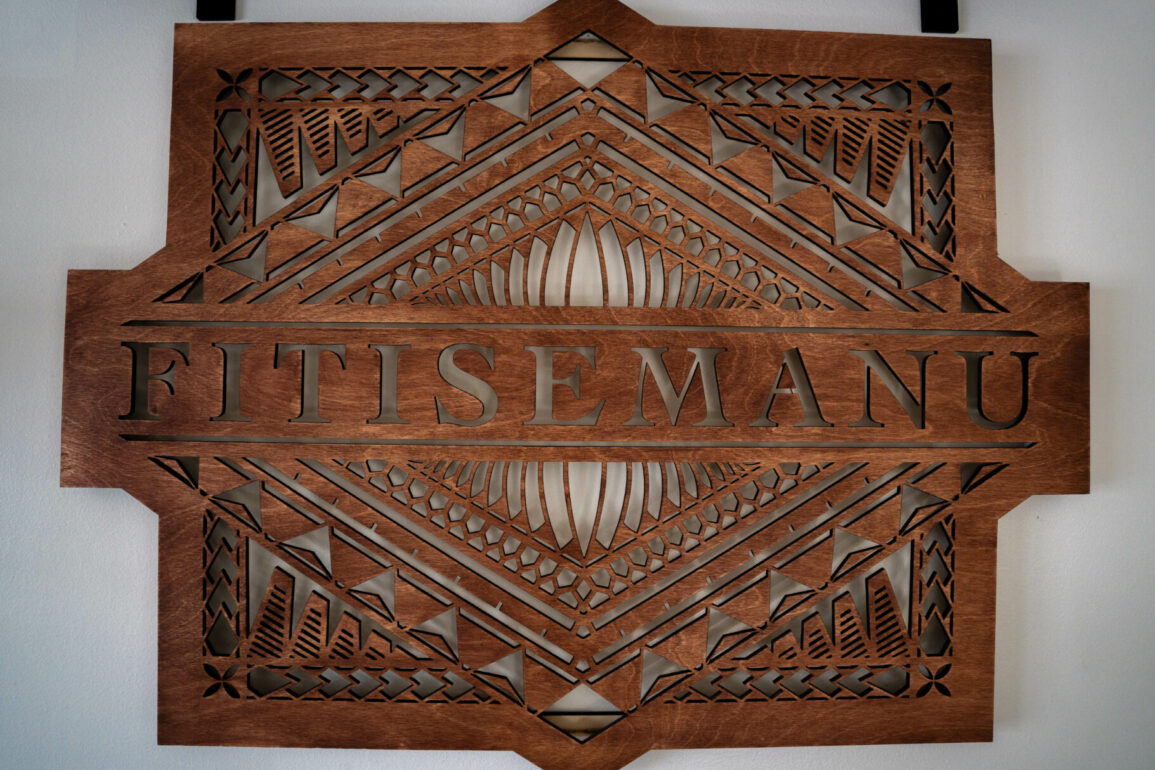Talavou Fitisemanu, a Tongan-Samoan student at BYU, struggled to manage his Polynesian art business while playing Division I football, until he decided to step away from sports last summer and invest in his business.
While he loved football, he said he felt a tug to something else.
“I don’t think my greatest talents would be what I can do on the field, but maybe how I can connect with others,” he said.
He began by sketching Polynesian tribal drawings while bored in class, to engraving scriptures, journals, leather goods and wallets during his mission. Now, Fitisemanu designs wood pieces that use Polynesian patterns to tell stories. These patterns intend to capture narratives through the wood engravings he makes for clients.
He said the process begins with a client consultation, where he learns about why they want their specific story to be captured. Fitisemanu then uses technology to create the designs and sends the designs to a manufacturer to be laser engraved.

“I feel more connected and fulfillment from it, and I can take who I am on the field to the art game, too, you know,” Fitisemanu said. “The hard work, the discipline, the work ethic and the consistency … doesn’t fade away.”
Fitisemanu’s friend, Soma Helu, said Polynesian art is something they would tattoo on people who earned it. He said it represents lineage, among other things. Fitisemanu made a piece as a gift for Helu’s wedding.
“You wear it on your body, or you carry it like on an art piece with pride,” said Helu.
Fitisemanu compared Polynesian art to a favorite song. By building a relationship with it, he hopes his artwork will inspire others to become who they want to be.
“There’s sacrifices that’ve been given from the people before and they’re paving the way for people who would come after,” he said.
Helu said he got a tattoo for himself because of their cultural meaning.
“I just feel honored to be, you know, wearing pieces like that on my body and then to like have Vou (Fitisemanu) make a piece for my wife and I,” Helu said. “It’s special … it just makes it even more special because it’s, you know, it’s from Vou.”
Vernon Hanks, Fitisemanu’s manufacturer, said Fitisemanu’s artwork is a lot more detailed, involved and has much “cleaner cuts” compared to others.

“It’s his excitement … It’s very, it’s pure. You can tell that he’s excited with his own artwork as well with his job,” Hanks said.
As he learns more about the meaning of Polynesian art, Fitisemanu said his intentions becomes stronger. He said he hopes he can share and give freely, as others have taught and given freely to him during his own learning process.
“This is why we do this,” he said. “I think I become more rooted, and the deeper my roots, I think the higher that we can grow,” Fitisemanu said.
People can learn more about Fitisemanu’s art on his website.
This post was originally published on this site be sure to check out more of their content









